Setting goals and getting active
Learning how to set goals helps people living with pain to gain confidence and control over the process of change. Goal setting involves choosing priorities, such as becoming fitter, engaging in social activities or managing anxiety.
Your role is to use a coaching style of communication to help your patient identify things they want to change.
The person with pain can break down big goals into manageable, paced SMART goals. These goals are often called targets.
SMART means:
Specific
Measurable
Achievable
Realistic
Time-framed
We are not proposing that you coach the person you are supporting forever. Rather, you are teaching them the skill of goal setting and offering positive feedback – then you hand over to them!
Follow the action points below to support them with goal setting.

Form person centred goals for the future
In this short video Dr Tim Williams explains the value of supporting people to form goals that make sense to them.
This is tip number four of Tim’s Ten top tips for clinicians which he recorded a few years ago for Live Well with Pain.
You can watch all ten of Tim’s top tips here.
Actions you can take
Make sure it’s the person you’re working with that generates the goals
It is essential that it is the person you’re supporting rather you who generates the goals – this is much more likely to be effective!
Ideally a goal should be an action (behaviour change) rather than a result, for example “stop snacking between meals” rather than “be thinner.”
Here’s an example of how the conversation can start:
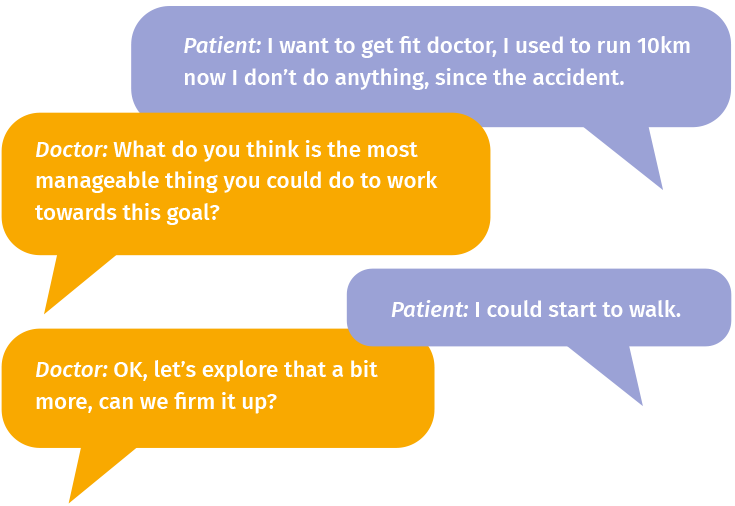
Make the goal SMART
Firming it up is all about making a goal SMART. Making this walking goal SMART, it could look like this:
Specific – walking activity
Measureable – two kilometres distance
Achievable – three-times-a-week regular smaller distance walks
Realistic – paced weekly walk distances increasing each week
Time-framed – two kilometres walk distance at the end of 8 weeks.
Give the person you are supporting the goal setting leaflet. It helps explain the idea of SMART goals.
Weekly targets to work towards this SMART goal could look like this:
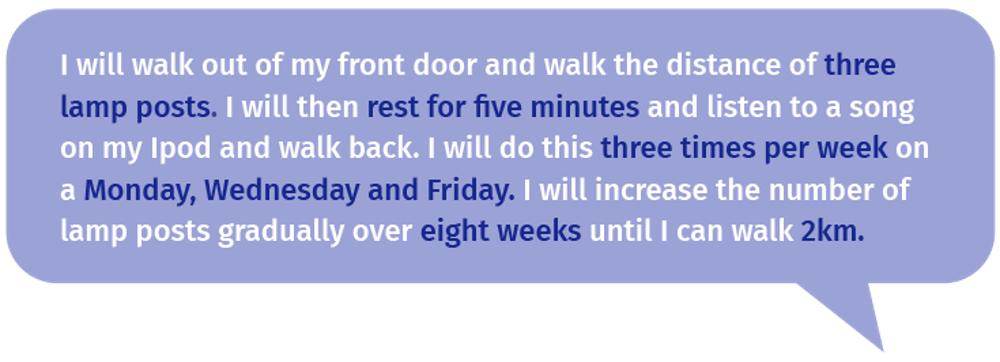
Remind the person you’re working with to pace the goal – use an effort scale
Pacing skills are as important as goal setting skills and they go hand in hand. They make the goal achievable and realistic
An effort scale can make it easier to understand the idea of effort levels.
Try using an effort scale like the one shown here, to help the person you’re working with to gauge the right level of effort.
Planning to pace an activity so it will require an effort level between 4 and 7 on a 10 point scale, is usually about right for most people.
Over time, when the activity gets too easy or requires too little effort, it is time to move onto the next SMART goal.
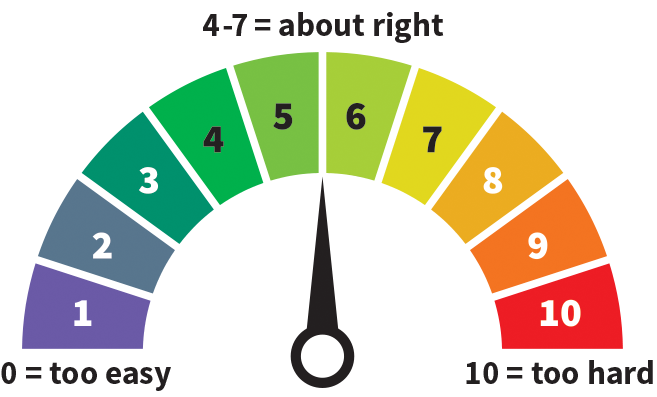
Help the person to create an action plan
A whole series of goals can be put together to make an action plan – a road map to the big goal. They could try using the Goal Ladder resource (see below).
Pace, but plan for setbacks
Explain that setbacks are to be expected. Encourage people to identify barriers to success and create a plan to respond to this. Identify what might lead to success such as using pacing skills (Footstep 3) and skills for managing setbacks (Footstep 10).
Encourage the person to give themselves meaningful rewards
These can be small or large but should be personal to them. Multisensory rewards are most helpful for retraining the brain to appreciate other pleasurable sensations apart from pain. For example, watching a favourite film whilst drinking a fruit smoothie or having a hot shower with a new perfumed shower gel whilst listening to a favourite tune.
Resources you can use with the person you are supporting
Goal setting
Achieving goals, especially for people living with persistent pain, can be difficult and challenging. One way of increasing the ability to reach goals is to develop the skill of goal setting. This leaflet for patients explains how.

My Goal Ladder
Many people find it useful to think about their SMART goals like steps on a ladder. This A4 sheet will help a person to break down each goal into small, achievable steps. These can be used to build up, week by week, towards a bigger goal.
It should be used in conjunction with the Goal setting booklet.
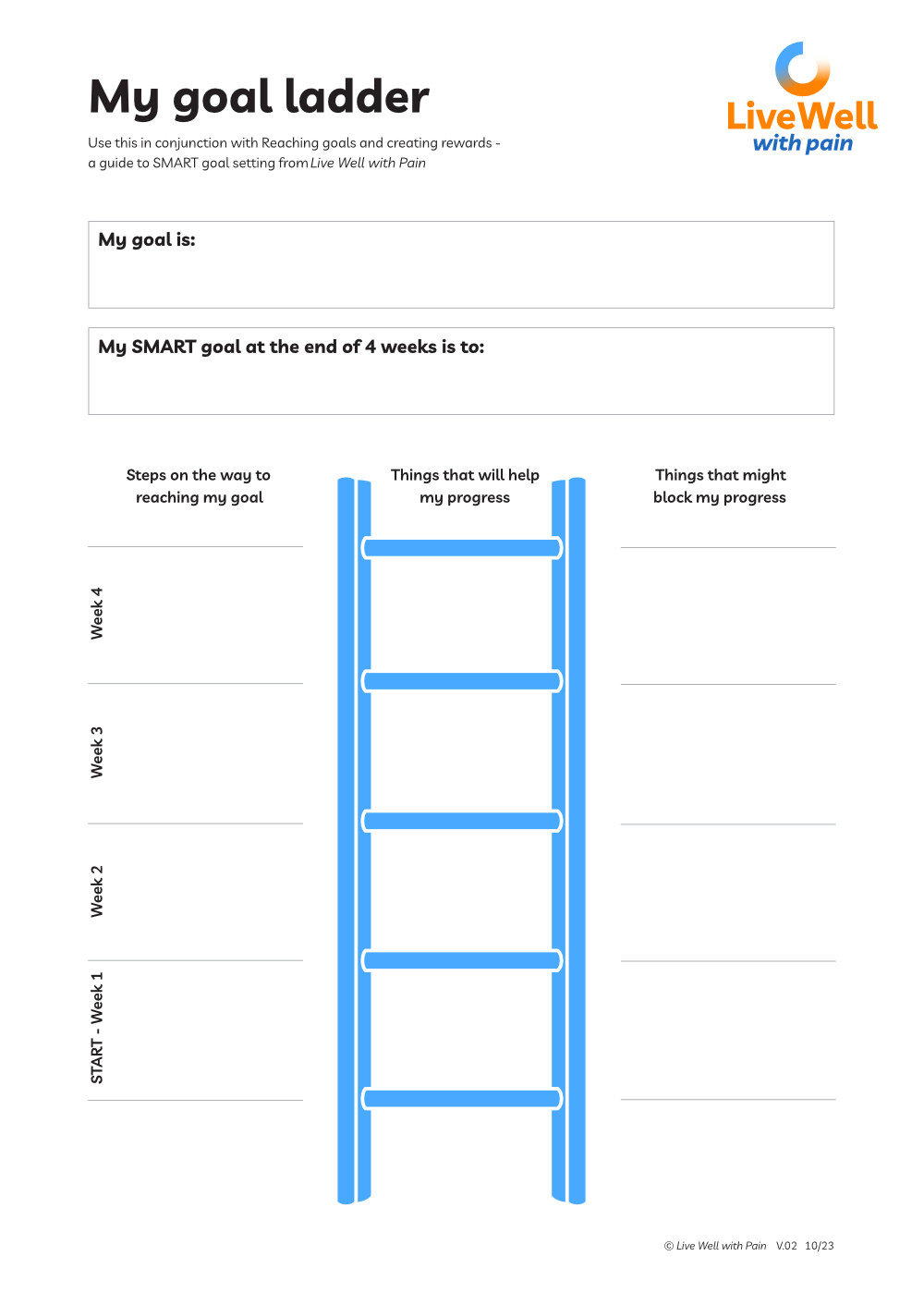
My SMART Goals
This A4 sheet encourages people to start thinking about goals in different areas of their life.
It should be used in conjunction with the Goal setting booklet.
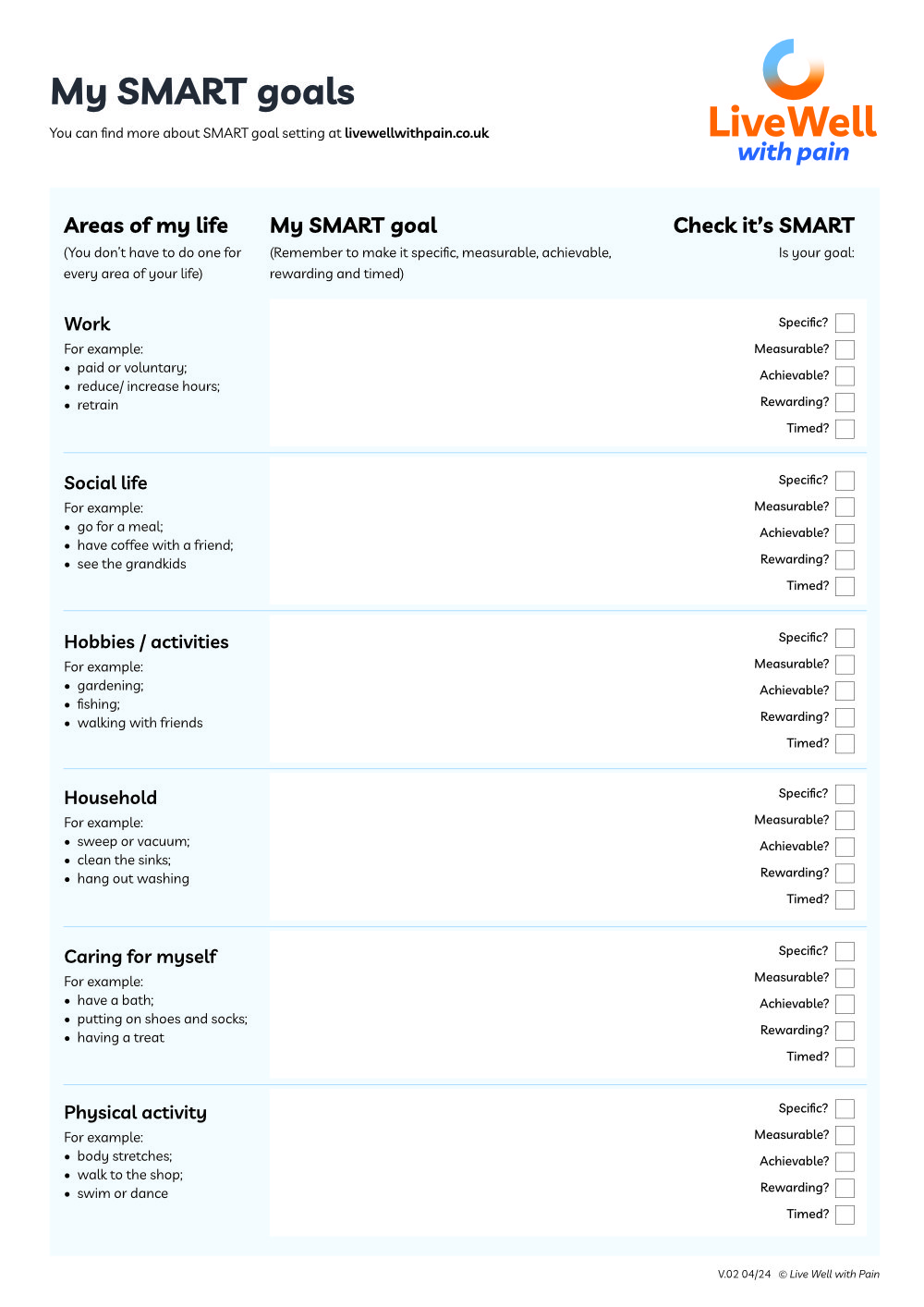
Live Well with Pain Health and Wellbeing Check tool
The Live Well with Pain Health and Well Being Check tool is a self-completion, person-centred tool that can be shared easily with patients and clients.
The data from this completed tool will help identify the actual current impact of chronic pain on the individual and their health.
You can find a more detailed explanation of the Live Well with Pain Health and Well Being Check tool here.
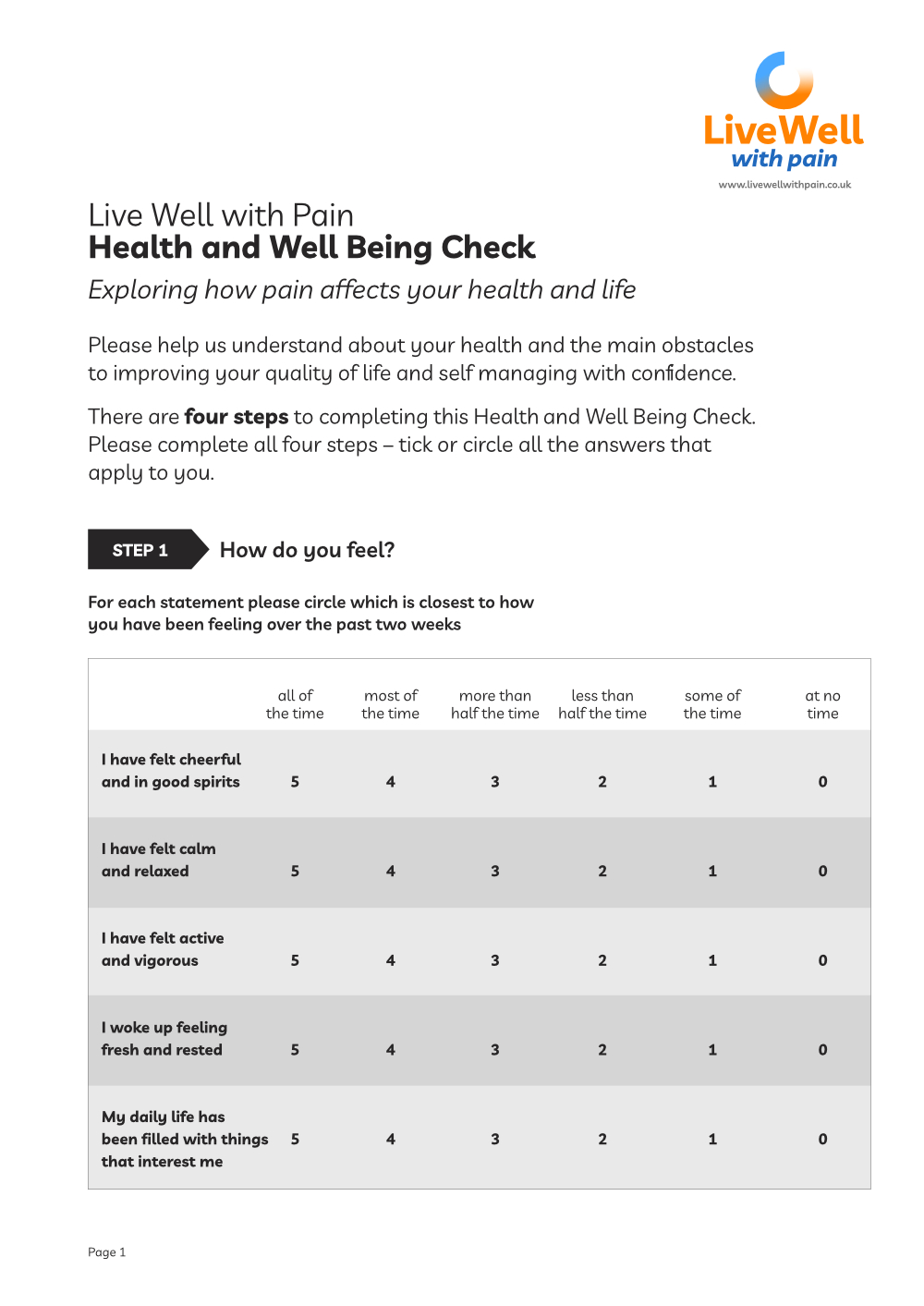
Learning resources for you
How to eat a plane(!)
Phil Sizer is a specialist in self management for chronic pain and the author of Chronic Pain, the drug free way, published by Sheldon Press. In this article, taken from Live Well with Pain’s clinician newsletter, Phil takes a sideways look at goal setting and finds that motivation is everything – as long as you keep chomping!
Reprinted from Live Well with Pain’s clinicians’ newsletter, March 2020
Footstep 4 – Goal setting
Summary of key points
✔ SMART goal setting will help the patient to gain control and confidence over the process of change
✔ An action plan will help the patient to make and review progress
✔ The action plan should include rewards to provide positive reinforcement, and a setback plan